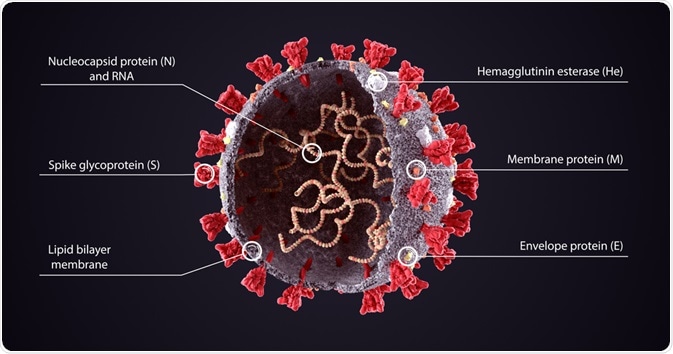The 1918 influenza pandemic caused by the H1N1 virus was the most severe pandemic experienced by humanity in modern history. The lethal spread of the H1N1 virus had claimed up to 50 million lives globally, including 675,000 in the United States.
The current study comparing the death tolls between the 1918 influenza pandemic and recent COVID-19 pandemic revealed that the absolute increase in mortality over baseline, which was described by the scientists as excess mortality, during 1918 influenza pandemic was higher, but comparable to that occurred during initial periods of COVID-19 pandemic in New York City. According to the World Health Organization, so far, the COVID-19 pandemic has claimed over 762,000 lives globally, including 168,334 in the United States.

Image Credit: Orpheus FX/Shutterstock.com
For the comparison, the scientists relied on the all-cause mortality data obtained from the Centers for Disease Control and Prevention (1914-1918), the New York City Department of Health and Mental Hygiene (2020), and the US Census Bureau (2017-2020). The study was conducted according to the guidelines for reporting observational studies (the Strengthening the Reporting of Observational Studies in Epidemiology).
With all analyses in hand, the scientists found that the total number of deaths from all causes was 31,589 among 5,500,000 people in New York City during the peak of the influenza pandemic. This gives rise to an incident rate of 287.17 deaths/100,000 person-months. Person-months is a measure of death rate in a population during a specific time frame.
Similarly, during the initial period of COVID-19 pandemic, the total number of deaths from all causes was 33,465 among 8,280,000 people in New York City, giving rise to an incident rate of 202.08 deaths/100,000 person-months. Taken together, the current study findings showed that the overall mortality rate during the influenza pandemic was higher, but comparable to that observed during COVID-19 pandemic in New York City.
However, because of the advancement in medical science, public health and safety, and improvement in hygienic measures, the baseline death rate (the total number of deaths that would be expected in a given year without pandemic) from 2017-2019 was almost 50% lower than that observed during 1914-1917. Thus, by considering the significantly lower baseline death rate in recent years, the scientists believed that the excess mortality (deaths above baseline) due to the COVID-19 pandemic was actually significantly higher than that observed during the influenza pandemic.
The scientists, however, mentioned in the published article that they couldn't compare the native pathogenicity of H1N1 influenza virus and severe acute respiratory syndrome coronavirus 2 (SARS-CoV-2); thus, it cannot be estimated that how many lives were saved during COVID-19 pandemic because of the accessibility to advanced medical interventions, such as standard resuscitation, artificial ventilation, oxygen supplementation, extracorporeal membrane oxygenation, and kidney transplantation therapy.

H1N1 influenza virus. Image Credit: CDC
The scientists believe that in the absence of improved medical facilities, COVID-19 related death tolls would have been at least equal to or higher than the death tolls related to the influenza pandemic. This observation supports the recent polling data demonstrating that a substantial number of people in the United States believe the shutdown was not very successful in reducing the spread of infection, and also, the shutdown was lifted too hurriedly in many states. This is probably the reason behind an ever-increasing curve of new COVID-19 cases and death tolls in the United States.
According to the scientists, the current study findings can be of significant importance for government officials and the public in terms of visualizing the real magnitude and impact of this pandemic situation, which can subsequently influence the policy makers to come up with more practical solutions to break the chain of infection and prevent the possible exhaustion of life-saving resources in recent future.
Source:
Journal reference: